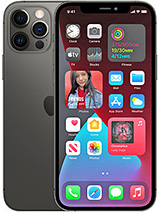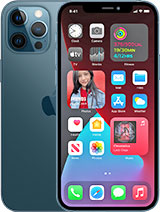iPhone 12 Pro Vs Pro Max Camera Comparison: Almost Identical By Fstoppers
I've got the iPhone 12 Pro and the brand new iPhone 12 Pro max. This is the first year that the larger phone is supposed to have a significant advantage when it comes to the cameras. Is it worth the extra money and carrying around a tablet size phone every day, let's find out today's video is sponsored by data color if you are looking for the most accurate colors or if you want to calibrate your monitor, check out data color and their products, which happen to be on an incredible sale right now, all the way, through Black Friday click on the link in the description right now to check it out, you can get the spider x photo kit for 50 off. You can get the color reader easy or the spider x pro or spider x elite right now, if you've never calibrated your monitor before I'll, also upload a video of me going through the process on one of my computer monitors here in the office. Okay, let's get to this comparison here. Each of these phones has three different cameras.
Let's start with the ultra-wide camera. Both of these cameras are supposed to be identical. Next up we have the standard, wide camera and on paper, both of these specs look the same 26 millimeters, f 1.6. However, these are very different cameras and lenses on the iPhone 12 Pro we have optical stabilization in the lens where an element of the lens is moving around to counteract the movement of the camera itself and on the 12 pro max. We have in body stabilization on a larger sensor.
This means that instead of an element moving around the sensor itself is moving around and apple says. This is going to do a better job, stabilizing your photos and videos. This camera also has a slightly larger sensor on the 12 pro max, which should create better looking images overall, but especially in low light, we'll get to that in just one. Second. Now, as far as I can tell, the two telephoto cameras should have the same sensors.
However, they have different lenses on the 12 pro they have a 52 millimeter f2 lens, whereas on the 12 pro max, we have a 65, millimeter, f 2.2, you get a little more reach, but also a slightly slower lens. Let's see how that affects the images for this first test. I used both phones on the same tripod and I shot the exact same image using the ultra-wide wide and telephoto cameras on both phones. Remember that the ultra-wide cameras are supposed to be the exact same and the images out of this camera. Look the exact same.
So, let's move on to the next camera. Now for the standard lens, we should be seeing slightly better image quality out of the iPhone 12 Pro max, but I'm not seeing it here on a tripod. Maybe we'll see some advantages in another test. Moving on to the telephoto lenses, you can definitely see that there is more reach on the iPhone 12 Pro max. However, image quality again seems to be almost identical here.
Here's a similar test where I shot video instead of stills and as you can see, this footage looks very similar, even when we zoom in to 300 percent. Here, I can't see any difference besides that extra reach of the 65 millimeter telephoto lens on the 12 pro max next up, I wanted to test stabilization while walking on each of the phones on each of the lenses. We started off with the ultra-wide angle and again these should be the exact same camera and lens, and they do look identical to me now. This should be a clear winner for the standard wide angle lens because apple put in their keynote, how much better the ibis was over the older optical stabilization in this standard lens. But when I look at these side by side, maybe the iPhone 12 Pro max is a little better.
But it's not nearly the difference that I expected now. I expected the telephoto walking shots to be completely unusable, but the digital stabilization on both of these cameras looks perfect, and the digital stabilization on the 65 millimeter on the 12 pro max might even look a little better than the 12 pro. This was a huge shock to me, but in reality they are so, so close next up. I wanted to test portrait mode and portrait mode uses the telephoto lens to capture a standard portrait and then add a fake blur to the background to make it look like it was taken with a shallow depth of field or a more professional camera and lens. Both of these shots were taken handheld and to get the same field of view.
I took a step backwards when I shot with the 12 pro max. Both of these cameras look fantastic, and I don't think I would be able to tell that this was taken with a cell phone if this was posted somewhere online. Obviously, if you zoom in- and you really start looking, you can see some errors, especially around flyaway and hair, but for the most part both of these shots. Look fantastic, and they look very, very similar, so in bright daylight. Both of these phones perform almost identically.
What about in low light? Next up, we went into the studio and I shot all the way through the is orange, with each one of the phones and each one of the cameras. First off I started with the ultra-wide angle, cameras and because they're supposed to be identical cameras, the photos looked identical now when it comes to the standard wide angle lens here. This is where I thought for sure the 12 pro max would excel. But, as I crank up the ISO here, both of these shots look almost identical to me. I can't see any advantage to the slightly larger sensor at all for the telephoto cameras.
We have very similar results. Obviously we can see a slightly different field of view with the different lenses, but I thought the 12 pro might do a little better with the faster lens, but the grain and the noise on both of these shots looks identical to me. iPhones have this feature called night mode that I wanted to check out in this next test. You can see here we have a shot of Patrick that was taken with a standard iPhone app without any of our studio lights, on he's currently being lit by just the littlest bit of light, coming through curtains across the room. This is incredibly dark in real life and, as you can see, this image looks awful super grainy super blurry, but when I jump into night mode, which takes a three-second exposure, you can see how amazing this is.
It really did a good job of cleaning it up now, because it's taking multiple images over a three-second time period, if Patrick moves or if the camera moves a little, you will get different results, and so, although in this example, it looks like the iPhone 12 Pro did a better job. I took a bunch of different images, and sometimes I got the 12 pro max to look better, and sometimes I got the iPhone 12 Pro to look better. Basically, I think both phones work the exact same, and just so, you can see how impressive this feature is: here's a shot taken in the exact same lighting with my Nikon d850 at one tenth of a second f 2.8 ISO, 12 800. You can see that the image on the right certainly is better, but man the iPhone is getting really, really close, which blows my mind. So what have we learned? Well, the iPhone 12 Pro max has great cameras, but they're, really not that much better than the iPhone 12 Pro really.
The only difference is the telephoto lens has a little more reach if that's important to you, go for the 12 pro max. If you want the larger screen go for the 12 pro max, but for me personally, I like a smaller phone. I like saving money, I'm going to stick with the iPhone 12 Pro. I am totally happy with that for more free content, just like this head over to fstoppers. com and if you'd like to check out our full-length photography and video tutorials head over to fstoppers.
com store, you.
Source : Fstoppers











![Google Pixel 2 Review: Solid Foundation [4K]](https://img.youtube.com/vi/nLF8FHHh4vQ/maxresdefault.jpg )














